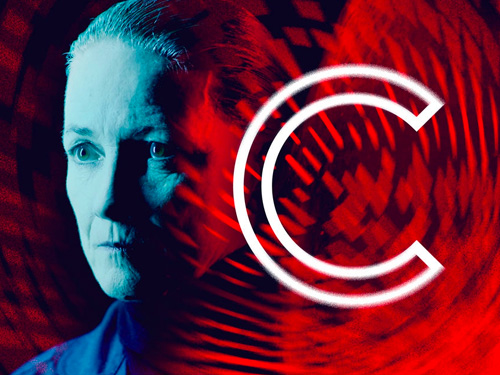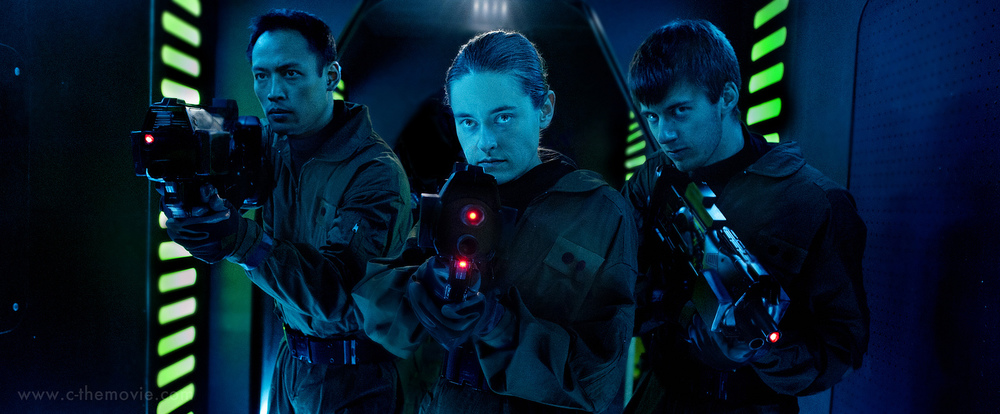Sci-Fi Short C (299,792 KM/S) - Made Without CGI or Greenscreen

Back in late 2011 Derek Van Gorder and Otto Stockmeier where able to successfully get their Kickstarter for C (299,792 KM/S) funded. They got twice the amount they needed to create their ambitious short film. Their goal was to use retro film making techniques to make a Sci-Fi film without CGI or greenscreen.
C (299,792 KM/S) has a Dharma Initiative in outer space vibe. The story is very simple, so simple that if I were to describe it I would give away the whole plot. C (299,792 KM/S) is very visually dark and the soundtrack has this atmospheric tempo that pushes the pace forward as it dazzles you with retro effects. If you like 2001 A Space Odyssey odds are you will enjoy this short.

The filmmakers shared with Wired how they were able to create a Sci-Fi short set in space with no CGI or Greenscreen.
Stockmeier: All of our miniature photography was done using the 2 meter DitoGear motion-control Omnislider, which is often used for time-lapse photography and stop animation. The repeatable motion allowed us to get multiple passes for each shot, meaning we could expose for different elements separately and turn the different passes on and off in the edit to create various effects. Also the continuous motion setting let us shoot high resolution stills for each frame while maintaining the correct motion blur. By shooting stills instead of live video we were able to use low light and keep deep focus by lengthening exposure times (meaning a 10 second shot could take half an hour to film, and when you add multiple passes to that it was slow going).
We found a lot of use for projectors both on set and during miniature photography. On set they served for background screens and combined with pegboard to create textured moving walls. Our designer Thomas Kronbichler would create a still version of the graphic for us and then Derek would animate it in Final Cut Pro. At one point for the bridge scenes we had 4-5 projectors going all playing looped videos. For the planet shots we ended up projecting a video of Jupiter behind the ship that moved in sync with the camera to make it look like only the ship is moving. This created an interesting additional effect, since the texture of the screen still moved with the ship it gave a sort of haze to the planet which we liked.
Otherwise, everything is lights, flares, split screen and other tricks. We got a lot of mileage out of some simple home-depot LED lights in creating all of the different explosion and firing flares.
Wired: The UI of the ship features prominently in the film. Tell us about the design of the UI and a little bit about how it was filmed.
Stockmeier: A big part of what sells this film is keeping things tight and fast, and we found that showing a lot of user interface screens to be a very effective way to quickly explain things without us having to build more sets or models. From the beginning we planned to take advantage of this, and as it progressed we found ourselves generating more and more graphics because it was so helpful.
As I briefly explained with the projectors, all of the graphics were designed by Thomas Kronbichler. He would send us illustrator files with everything laid out and a rough plan of how to animate it. Derek would then take all the elements into Final Cut and animate them frame-by-frame. We would then either project them into the sets, or film them off of an iPad. When filming the iPad we used filters, multiple passes, and soft focus to really extenuate the feeling that you are looking at a screen in a room and not a completely digitally generated image
You can checkout the full interview at Wired.